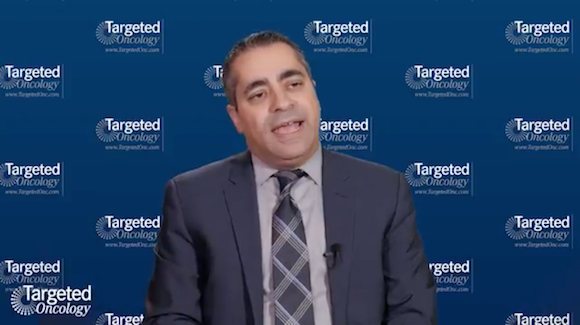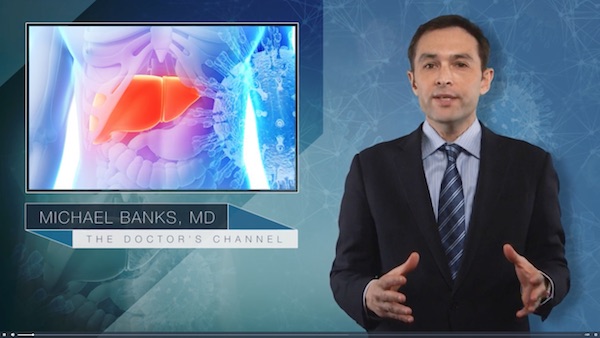Insulin resistance cuts cure rate in treatment of HCV: meta-analysis
Reuters Health • The Doctor's Channel Daily Newscast
Insulin resistance is common in HCV infection, but “individual studies of its impact on treatment had conflicting results,” senior author Dr. Lawrence Serfaty, at UPMC Univ Paris 06, France, told Reuters Health.
He and his colleagues found that sustained viral response (SVR) rates were lower by about 20% in patients with insulin resistance estimated using the homeostasis model assessment (HOMA-IR). On the other hand, patients with a good treatment response had a HOMA-IR index that was lower by 0.9 compared to their counterparts.
This association makes it essential when starting HCV treatment to try to reduce insulin resistance through lifestyle modifications (diet regimens and exercise), said Dr. Mahmoud Khattab, Professor of Internal Medicine and Hepatology at Minia University, Egypt, who has published extensively on this topic.
If that doesn’t work, he added in email comments, “the conjoined use of insulin sensitizers such as pioglitazone and metformin with standard of care treatment against HCV proved to be effective in increasing the response rate.”
Also, preliminary data suggest that insulin resistance may lose its inhibitory effect when the investigational HCV protease inhibitor telaprevir is added to the standard regimen of pegylated interferon and ribavirin, Dr. Serfaty’s team points out in the Journal of Hepatology posted online April 13th.
Their literature search turned up 14 studies involving 2732 patients, published since 2005. Treatment with pegylated interfron-alpha-2a or –alpha-2b and ribavirin lasted 24 weeks for infections with HCV genotypes 2 or 3, and 48 weeks for genotype 1.
They defined a SVR rate as the percentage of patients with undetectable HCV RNA 24 weeks after the end of therapy.
Their first meta-analysis included nine studies (1902 patients) in which a cut-off HOMA-IR value of > 2 to > 3 indicated insulin resistance. Data showed that 759 patients (40%; range 12% to 64%) had a SVR and 1143 patients did not.
SVR rates were lower on average by 19.6% (p < 0.001) in patients with insulin resistance compared with those without.
In their second meta-analysis, the researchers looked at differences in baseline HOMA-IR index between the 1474 responders and the 877 nonresponders. The index was lower by 0.92 among those with a SVR vs those without (p < 0.001).
Sensitivity analyses that included only patients with HCV genotype 1 showed similar, statistically significant associations.
As to why HCV recovery would be so affected, Dr. Serfaty’s team has several theories, such as the association between insulin resistance and degree of liver fibrosis or inflammation, or promotion of HCV replication or inhibition of interferon signaling by increased insulin levels.
They note that their analysis excluded children, liver transplant recipients and patients co-infected with HIV. Other limitations were their inability to account for other risk factors, such as degree of liver fibrosis, viremia, age, and metabolic derangements.
“The next step will be to test other treatments that might influence insulin resistance, or else make treatment more efficient, so that in 3 to 4 years we can be curing more patients,” Dr. Serfaty concluded.
“Nearly all the studies demonstrated at least some effect of insulin resistance impairing SVR,” said Professor Manuel Romero-Gómez, from the Hospital Universitario de Valme and Universidad de Sevilla, Spain, whose research was included in the analyses. He noted in an email that the studies that didn’t show this association either used the higher HOMA-IR cutoff, had a low prevalence of advanced fibrosis or cirrhosis, or were under-powered.
“This observation supports the idea that the more difficult-to-treat cohort, the better the HOMA-IR prediction,” he added.
The trials also varied in the ability of insulin-sensitizers to affect response rates. According to Professor Romero-Gómez, “the mechanism by which the virus promotes insulin resistance seems to be genotype-dependent: mTOR-based in genotype 1 and PPAR-gamma-based in genotype 3, supporting the idea that therapeutic options should be different according to genotypes.”
Professor Khattab added, “Insulin resistance has been included among cornerstone parameters for scheduling duration of therapy, whether it can be shortened to 24 weeks or be prolonged to 72 weeks.”
Neither Professor Romero-Gómez nor Professor Khattab participated in the current study.
Reference:
Impact of insulin resistance on sustained response in HCV patients treated with pegylated interferon and ribavirin: a meta-analysis
J Hepatol 2011.






